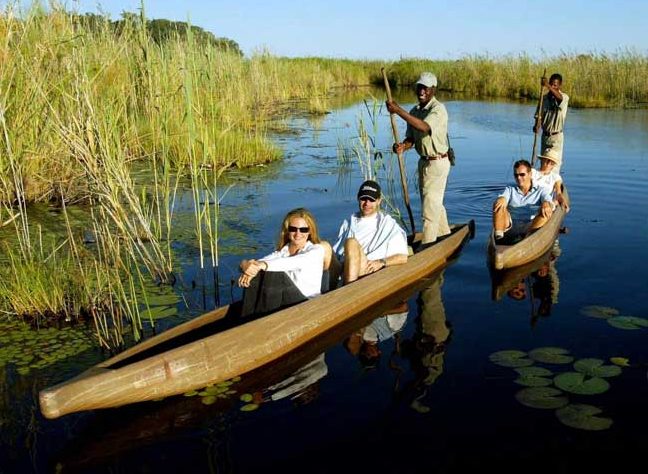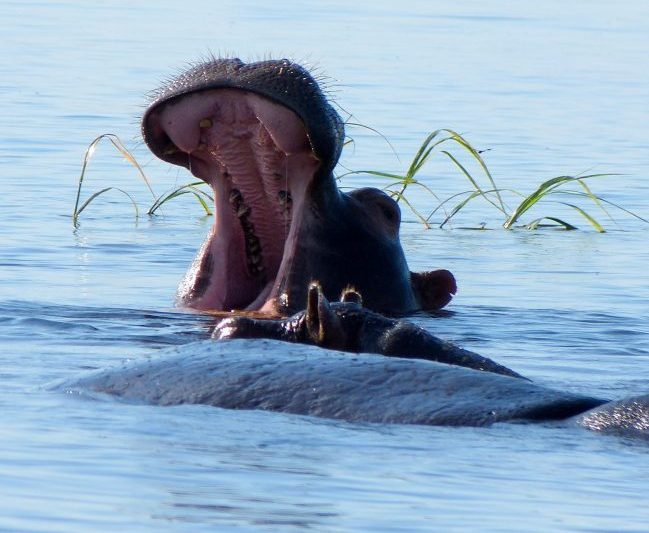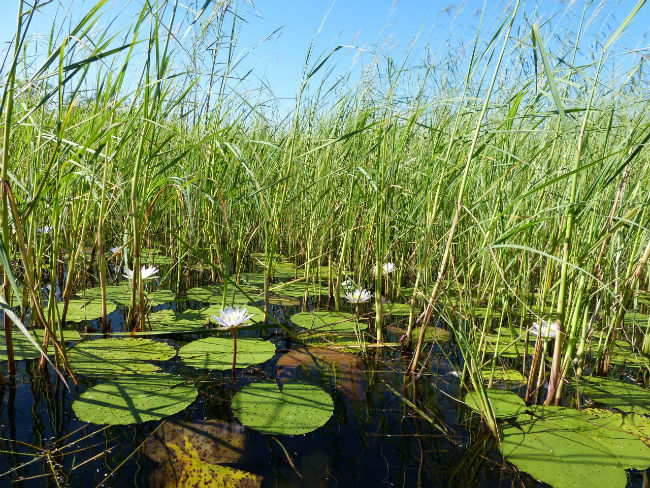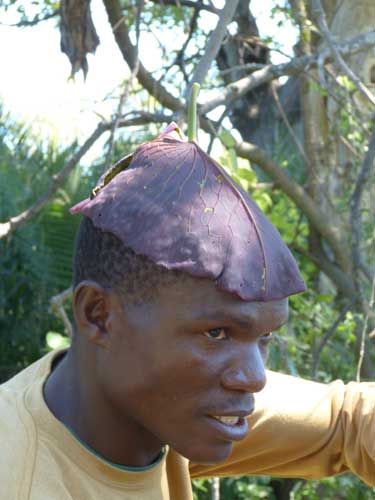

“Don’t fidget. Don’t even think about standing up. Keep your hands out of the water.”
So warned, I clutch the sides of a tippy-prone canoe known as a mokoro in this part of the world as we push off into a carpet of lily pads here in Botswana.
Botswana: Okavango Delta
It seems to me, given that crocodiles abound in Botswana’s Okavango Delta, that I’m seated alarmingly close to the water. Reason enough not to dangle one’s hands in the water.
Hippopotamus, considered among the most dangerous of wild animals, also abound.
Tales are told in the Okavango of hippos, able to submerge and swim for considerable distances under water, popping up under mekora (plural) for the sheer fun of toppling them.
I fail to see how not fidgeting will curtail such behavior.
Mekora (plural) are propelled by a “poler” — think African gondolier — standing in the rear with a 12-foot pole in hand. My poler introduces himself as “Focus.” It takes me a moment to understand that he is telling me his name and not adding to the “don’t fidget” list.
The Canoes
Pole-propelled canoes have plied the Okavango’s 6,000-square-mile labyrinth of waterways since the mid-1800s when the BaYei people wandered down the Zambezi and found the delta ideal for their time-honored mode of transport.
Traditionally, tree trunks were hollowed out by means of fire and a small hatchet – great jackalberry trees especially favored for their long, straight trunks – resulting in a low-floating craft of about 20 feet in length and pointed at each end.
Today’s mekora are constructed of fiberglass.
Unless you give one a thump or are asked to heft it, they appear dead ringers for the water-weathered, tree- trunk originals, most of which now decorate the entrances of wilderness lodges.
We are a flotilla of four, two to a mokoro. For the eight of us, this is day 17 on an ElderTrek’s 23-day “Splendors of Africa” tour.
Elder Treks is a Toronto, Canada-based touring company specializing in adventure travel for those aged 50 plus.

For 16 days, we explored the splendors of Namibia before making our way to the Okavango for three days of adventuring in a small corner of the Delta’s 6,000 square miles of floodplains, narrow channels and innumerable small islands.
Safaris into Botswana’s Chobe National Park would come next, with Zimbabwe’s thundering Victoria Falls the tour’s finale.
Focus grew up in the Okavango, he tells me, where learning how to pole a mokoro is something all kids learn how to do, rather like riding a bicycle in other parts of the world.
“I fell in a lot,” he says.
We skim soundlessly through the crystal-clear, lemon-lime water into narrow channels with papyrus and reed elbowing in on either side, and make our way through the grasses and water lilies of shallow lagoons.
We pole the edges of small islands fringed with tall palms and short fig trees, and pull ashore on one to picnic and explore its interior.
Wildlife in the Okavango Delta
We see nary a crocodile or a hippo, or any other of the delta’s estimated 200,000 large mammals, including herds of buffalo, elephant and lechwe antelope. I ask Focus why that is.
The reason: Most of the animals in the Okavango are not year-round residents. They leave when the rainy season comes to find fields of grass to graze, making their way back when the season ends.
This year, the wet season was running late, well into April. They’d not yet returned. As for the crocodiles, their favored lounging areas, sunny banks, remain submerged. They, too are elsewhere.

The Beautiful Birds
As if to make up for it, birds are in abundance with chirps, twitters, and tweeting providing the sound track for our adventure. Many are of such fine-feathered iridescence, that they appear Tiffany designed.
Flowers, too, are in abundance, with entire bouquets brightening the papyrus and reed greenery. Of course, there are many water lilies. Handy things, lily pads. Forgot your hat? Try a lily pad, as Focus modeled.

Sitting back in the padded seat and backrest thoughtfully provided, and no longer concerned that a little fidget would put us in the drink, I’m struck by the Okavango’s beauty.
Exotic Animals
We’d seen plentiful exotic animals in Namibia’s Etosha National Park, with the certainty of a Botswana menagerie in Chobe National Park yet to come.
No need to add Okavango exotic sightings to my Africa checklist.
It is then that my mokoro partner spies three sets of periscope eyes floating in the cove of the island we are passing. Our flotilla of four comes to a halt.
Hippos. With a great harrumph and grunt, one rears its head out of the water and opens its massive jaw wide.
It’s not something you would want to encounter if coming up for air after a surprise toppling.
Seeing the Periscope Eyes
Oh, oh – now there are two sets of periscope eyes.
Focus demonstrates fast poling.

Nguma Island Lodge in Okavango
The porch of my permanently tented cabin at Nguma Island Lodge awaits, a fine place to relax with a glass of South Africa wine in hand.
Monkeys scamper about, swinging out of the trees and walking the tightrope banister of the boardwalk that ties the lodge’s 12 tents to the log-structure dining, bar, and lounge overlooking the lagoon.
At check-in, we were warned not to leave anything in our open-to-the-sky bathrooms, separated from the sleeping area by a screen door. The monkeys would steal it.
But now, a pre-dinner sunset cruise awaits. We make our way to the far edge of the lagoon as the oncoming evening’s golden light, framed by dark trees, turns pinky-purple.
The best is yet to come. As the sun settles into the horizon, the lagoon turns into a fire of reds, orange, terracotta.
To add an array of animals to the scene would be, well, redundant.
If You Go to the Okavango Delta:
ElderTreks has scheduled two “Splendors of South Africa” departures for 2018, March 13 and September 18. Price: $9595 for a 23-day itinerary. www.ElderTreks.com .
Author Bio: Yvonne Michie Horn is a Santa Rosa-based travel writer. See www.YvonneHorn.com and www.TheTravelingGardener.com
- How to Get Around in Sydney: A Local’s Guide to Traveling Around Sydney - April 24, 2024
- The Low-Key Magic of Ghent, Belgium - April 22, 2024
- Discover the Hidden Charm of Extremadura in Spain - April 20, 2024
